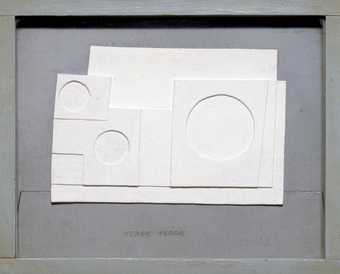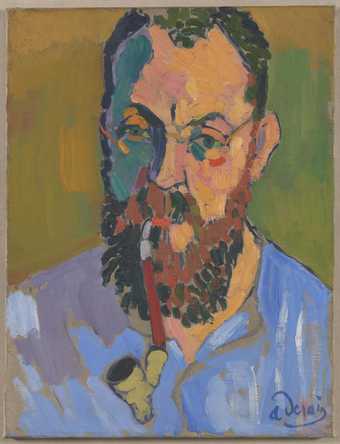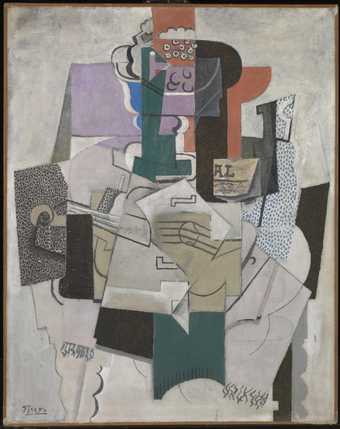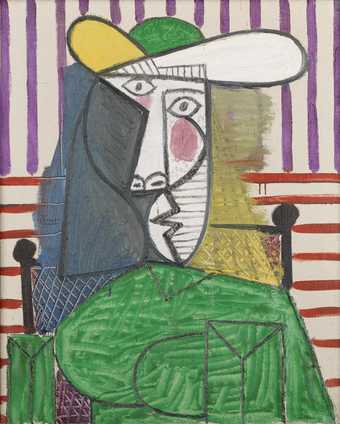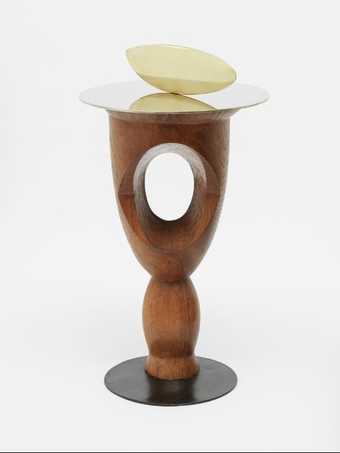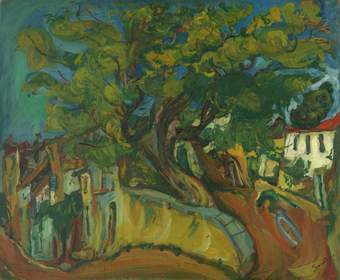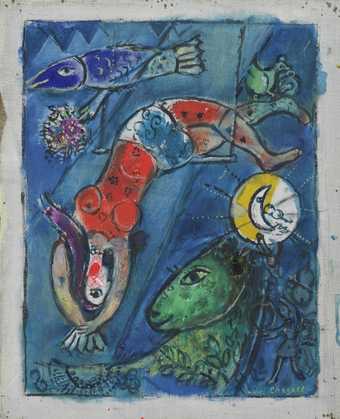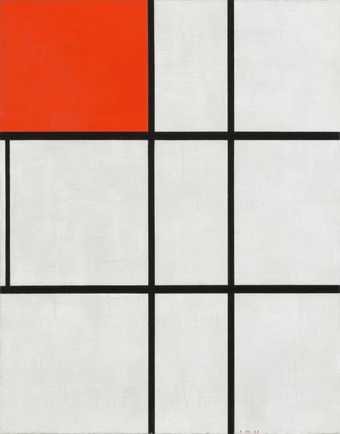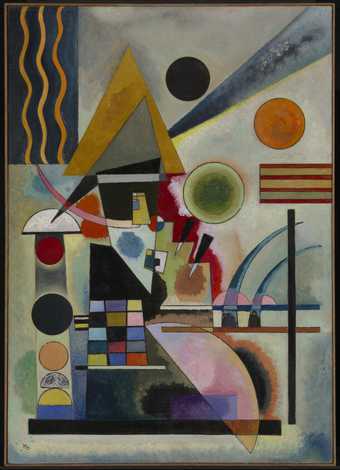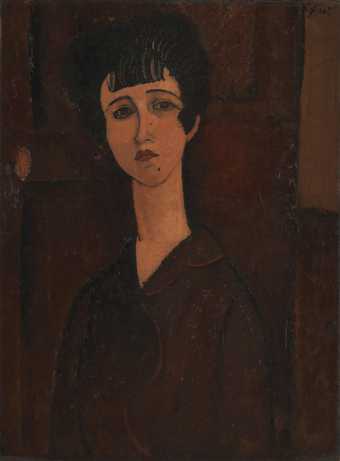
Amedeo Modigliani
Portrait of a Girl
(c.1917)
Tate
During the nineteenth century Paris, France, became the centre of a powerful national school of painting and sculpture, culminating in the dazzling innovations of impressionism and post-impressionism. As a result, in the early years of the twentieth century Paris became a magnet for artists from all over the world and the birthplace for some of the principal innovations of modern art, notably fauvism, cubism, abstract art and surrealism.
The twin chiefs (chefs d’école) were Pablo Picasso, who settled in Paris from his native Spain in 1904, and the Frenchman Henri Matisse. Also in 1904, the pioneer modern sculptor Constantin Brancusi arrived in Paris from Romania, and in 1906 the painter and sculptor Amedeo Modigliani from Italy. Chaïm Soutine arrived from Russia in 1911. The Russian painter Marc Chagall lived in Paris from 1910–14 and then again from 1923–39 and 1947–9, after which he moved to the South of France. The Dutch pioneer of pure abstract painting, Piet Mondrian, settled in Paris in 1920 and Wassily Kandinsky in 1933.
The heyday of the School of Paris was ended by the Second World War, although the term continued to be used to describe the artists of Paris. However, from about 1950 its dominance ceded to the rise of the New York school.

